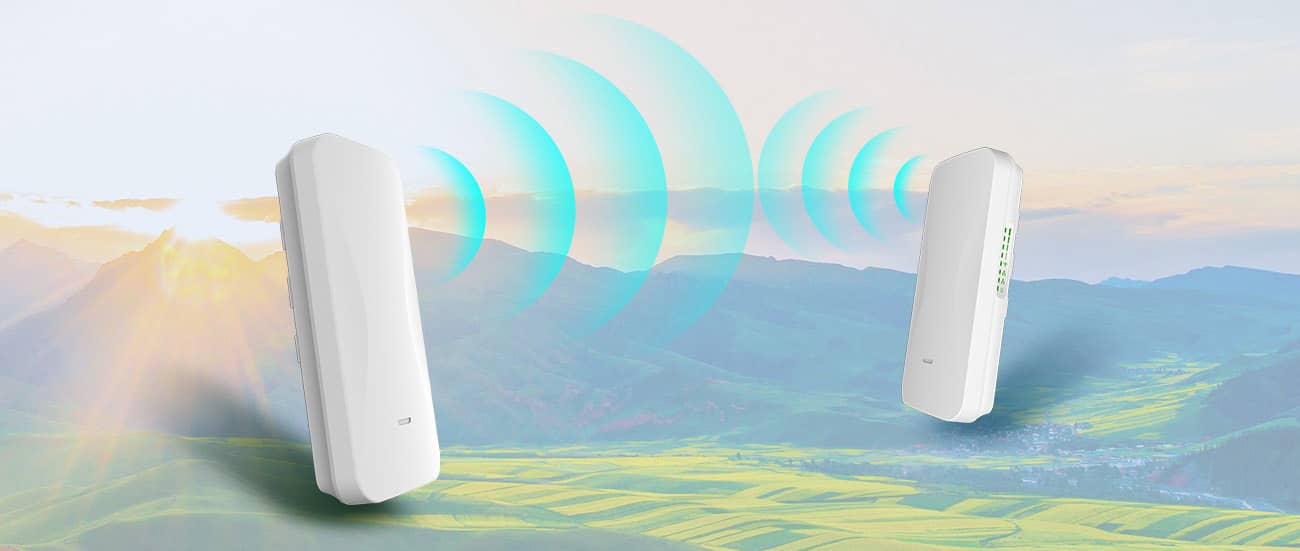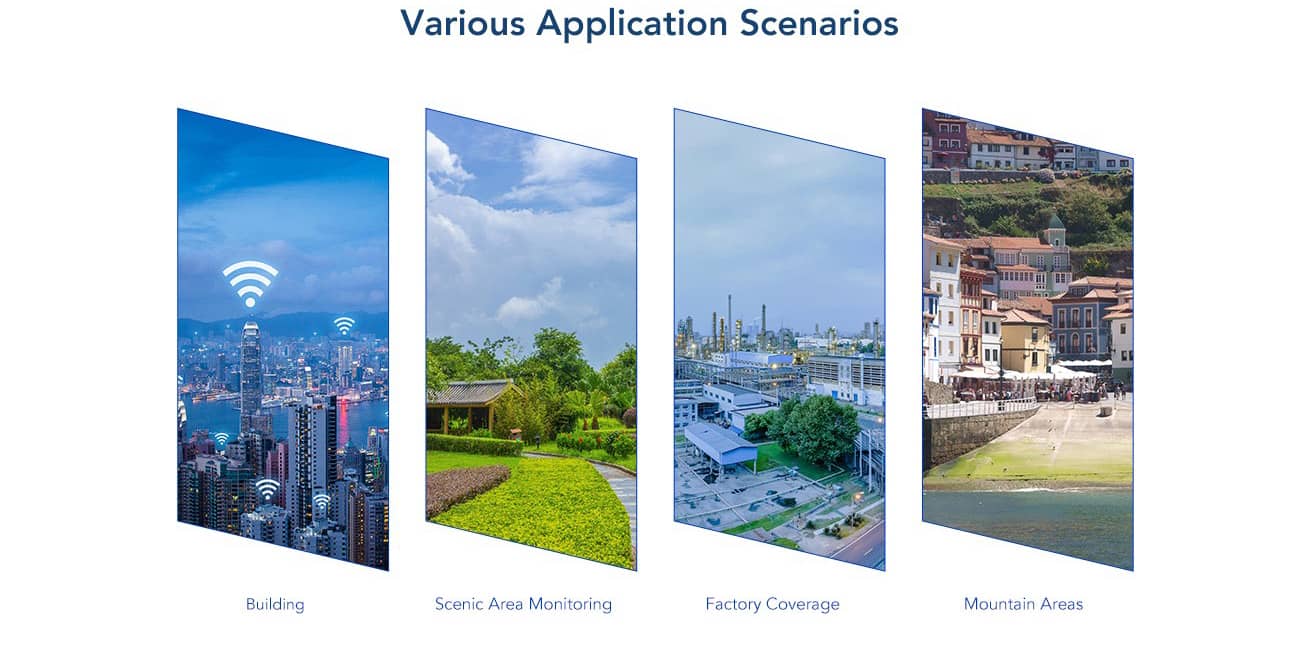Please submit your message online and we will contact you as soon as possible!
- Experience security and speed, without compromise.

2025-01-13

A wireless bridge is a network device that connects two or more separate networks over a wireless link. It enables seamless data communication between network segments that are geographically distant or difficult to wire. Wireless bridges can be used in various environments, including office campuses, industrial facilities, or even across towns, where physical cabling is either too costly or impractical.
Unlike regular WiFi networks, which use broadcasting to send signals to multiple devices, wireless bridges establish point-to-point connections. This means they transmit data between two fixed endpoints, ensuring dedicated, high-quality communication.
There are several scenarios where wireless bridges become the preferred solution over traditional wired connections. Here are the key advantages:
● Cost-Efficiency
Installing leased lines or running cables across large distances can be prohibitively expensive. Wireless bridges, especially WiFi wireless bridges, offer a more affordable solution for network interconnection, reducing the need for expensive infrastructure.
● Quick Deployment
Unlike wired connections, which often require digging trenches or waiting for permissions, wireless bridges can be installed much faster. They’re ideal for temporary setups or locations that need rapid network deployment.
● Flexibility in Challenging Environments
In cases where electrical interference or physical barriers make wired connections difficult (e.g., industrial sites or remote locations), wireless bridges offer a more flexible and reliable option. With proper planning, wireless Ethernet bridges can provide robust connectivity in otherwise challenging settings.
● Reduced Maintenance
Once set up, wireless bridges often require less maintenance compared to wired alternatives. There are no physical cables to repair or replace, making them a more cost-effective long-term solution.

Wireless bridges are incredibly versatile and can be deployed in various industries and environments. Some common applications include:
● Campus Networks: Connecting multiple buildings on a single campus without laying extensive wiring.
● Industrial Sites: Providing reliable connections between remote areas of factories or warehouses.
● Disaster Recovery: Offering an alternative communication solution when wired networks are damaged or unavailable.
● Point-to-Point Connectivity: Establishing high-speed, low-latency connections between offices, warehouses, or even across cities.
Selecting the right wireless bridge for your needs depends on several factors, including distance, environment, and regulatory considerations. Here’s a guide to help you choose:
1. Distance: Consider how far apart the networks are. For short-range applications, a simple WiFi wireless bridge may suffice. For long-range applications, look into high-performance wireless Ethernet bridges or specialized microwave bridges.
2. Frequency Bands: The performance of a wireless bridge can be influenced by the frequency bands it uses. WiFi bridges typically operate in the 2.4GHz or 5GHz bands, but for longer distances, licensed RF or microwave bridges may be necessary.
3. Environmental Considerations: If your deployment is in a high-interference area (like factories with machinery), a wireless Ethernet bridge using directional antennas may be a better fit, as it’s less susceptible to interference.
4. Regulatory Requirements: Depending on your region, some wireless bridges (especially those operating in licensed frequencies) may require regulatory approval. Always check local laws before deployment.
Wireless bridges offer a practical and efficient way to connect networks over distances where traditional wired solutions may not be viable. Whether you need a WiFi wireless bridge for short-range communication or a wireless Ethernet bridge for long-distance links, these devices offer flexible, cost-effective solutions to meet your connectivity needs.
When considering wireless bridges for your network, it’s essential to evaluate your specific requirements, including distance, interference, and budget, to make an informed choice. Wireless bridges can solve numerous connectivity challenges, from linking remote offices to setting up high-speed industrial networks.
Please submit your message online and we will contact you as soon as possible!